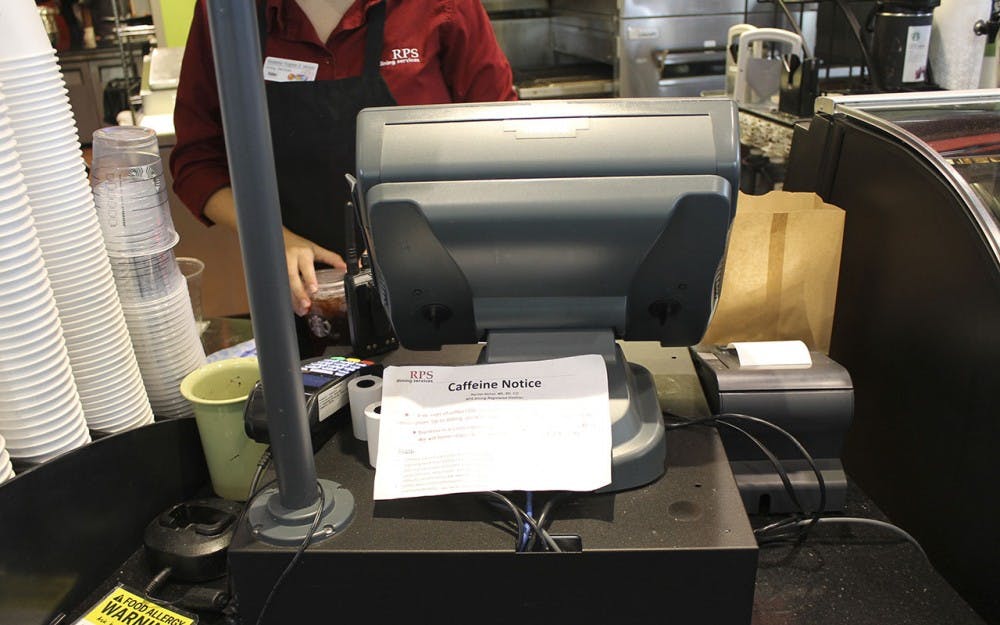Typically students ask for two shots of espresso, but in one dining hall, a student asked for 20.
This incident prompted a discussion that lead to caffeine notices posted around dining locations across campus. These notices provide facts about caffeine consumption and explained why there is now a four-shot espresso limit.
Dietitian Rachel Noirot was approached by her director after this happened in one of the campus dining locations. With one shot of espresso being around 40 mg of caffeine, 20 shots would be almost double the healthy limit, she said.
Sophomore Natalie Callahan said she, like many other students, often relies on this caffeine pick-me-up to get her through the day.
“With balancing everything, you just don’t have enough time, and most of the time the stuff that’s going to get cut out is sleep,” Callahan said.
Noirot said she believes the academic and social aspects of college often have students staying up late to finish their school work. While some caffeine consumption can have benefits on the body, she said it is important to drink caffeine in moderation. This includes sticking to 400 mg or less.
“If you go over 500 mg a day of caffeine, it can lead to anxiety, headaches, difficulty concentrating, trouble sleeping and dehydration,” Noirot said.
A registered dietitian, Noirot is responsible for staying educated on current research regarding topics like caffeine consumption. When deciding to limit students to four shots of espresso, she referred to Densie Webb’s article on todaysdietitian.com.
According to the article, caffeine can become toxic after one gram is consumed. This can lead to insomnia, heart palpitations and upset stomach. One gram of caffeine is the equivalent of six 12 ounce cups of coffee. A danger also comes when students consume multiple caffeinated items and do not think about how they will all add up, Noirot said.
“If you’re having caffeinated gum, all these things can mix together,” Noirot said.
Two pieces of caffeinated gum can equal one cup of coffee, according to the article. Other popular caffeinated items include tea, soft drinks and energy drinks. Noirot stresses that these items are fine but must be consumed in moderation.
“Yes, you can have espresso, and you can have coffee, but you need to drink water, and you need to get sleep,” Noirot said.
For Callahan, getting coffee in the morning is usually an easier option than adjusting her schedule to get more sleep. This might be the reason so many students rely on caffeine, she said.
Many people may often get a headache or feel fatigued after short-term, high-dose uses of caffeine, according to the article. This usually occurs after 6 to 15 days of consumption of at least 600 mg per day.
While over consumption of caffeine can have negative effects, Noirot said caffeine in moderation can have some positive effects as well.
Coffee contains antioxidants, she said. According to Karen Appold’s article “The Perks of Drinking a Cup of Joe” on todaysdietitian.com, coffee has been seen to decrease the risk of diabetes and some cancers.
These benefits all come with drinking coffee in healthy quantities. Callahan said she believes the caffeine notice signs posted in campus dining locations will inform students about the effects of the caffeine they are consuming and encourage them to make healthy decisions.
Noirot said the four-shot maximum is what she understands as a healthy and safe limit of caffeine.
“You can still have your 160 mg in espresso if you want,” Noirot said. “We don’t want to give you 800 mg.”



